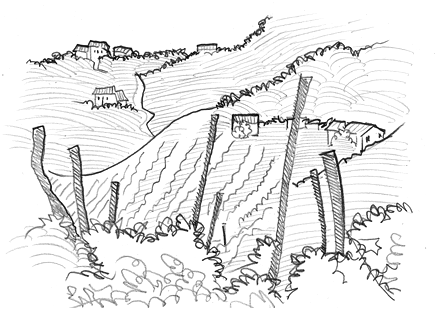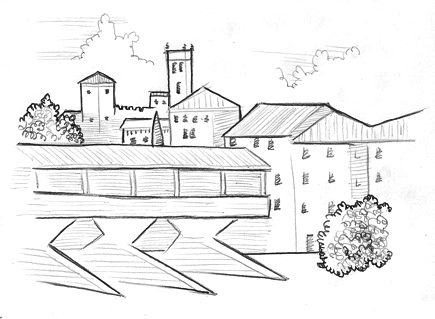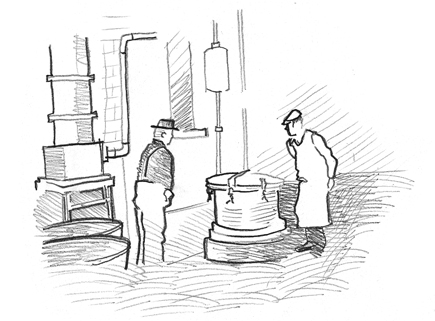ORIGINSThe application of the distillation’s technique to the wine for the production of grappa dates back to the work of the alchemists on the 12th century. In Italy, in 1000 years, the distillation of alcohol may have been carried out reliably by the School of Salerno and during the Middle Ages it only had medicinal uses. It seems that only in the 16th century grappa became even a liquor to drink.
Around the 1300-1400 years the introduction of water as a coolant in the distilling equipment made it possible to produce a substantially larger amount of distilled wine and to distill pomace. Around 1600 AD, the Jesuits studied and codified the techniques used to produce brandy or grappa, and their methods were used until 1813, when took place some improvements of the stripping column. changes , inserting inside it small plates with bells and down-tubes. In this way the distillate produced was richer in alcohol, thus shortening the entire process. In Italy it was mainly spread and drunk by peasant in the regions of the north-west side of the country, in particular Veneto, Trentino Alto Adige and Piedmont. Grappa was produce by distilling by distilling fermented grape's skins, after they have been pressed for the production of must used to make wine. In recent times, grappa renewed interest among any social class and it is considered a distillate of great value. In august 2011 was signed a decrees approving the technical sheets for Grappa that execute the Regulation (EC) no. 110/2008, regarding the definition, designation, presentation, labelling and protection of the geographic indications of alcoholic beverages approved on 15 January 2008. The new European Regulation establishes clear definitions for all alcoholic beverages and aims to help producers market their products, offering greater clarity for consumers. It came into force on 20 May 2008, defining clearly and once and for all the basic concept dearest to Italian distillers, namely, that Grappa is exclusively an Italian distillate. Grappa comes from the distillation of grape's pomace after racking off. Grape’s pomace are the skins of grapes remaining after the grapes are pressed to make wine and they can be fermented or vergin. Three features make the Grappa a product of absolute typicalness: - it is produced from a solid raw material put directly in a alembic; - it is a product of a specific geographic area. Some grappa can also boast the geographical name such as grappa of Barolo, Piedmont, Lombardy, Veneto, Trentino Alto Adige, Friuli. In addition, the distillate may also include the name of a wine DOCG, DOC or IGT when it comes from the production of that particular wine; - it is the product of a technology perfected over the centuries: the distillation. L |
|
(0) Items



